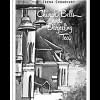Navigating culture, history, and nostalgia in ‘My Life in Tea’

"An industry with a glorious history and a distinct philosophy, tea is peace, and a great gift of nature to mankind's health and peace of mind," writes Anwarul Azim in his book My Life in Tea.
I read these words on a cold Friday morning while sitting on my balcony, sipping from a steaming cup of ultra-sweetened milk tea—just the way I like it. However, I learned from the book that my way of drinking tea, which is the prevalent practice in Bangladesh, is actually relatively new. This style of tea gained popularity in Bangladesh after its independence. Prior to that, the commercially promoted tea was known as Legg Cut Tea, characterised by its robust and greenish taste, commonly consumed by the people of West Pakistan. The tea leaves in your cup today, though, are either Orthodox or Crush, Tear, Curl (CTC) tea.
My Life in Tea explores the author's journey in the tea gardens of Sylhet, starting as a beginner assistant employed by the Duncan Brothers at Amo Tea Garden and eventually rising to the position of a manager overseeing both small and larger gardens. Interspersed with tales of tea are stories of the author's childhood and life in Bangladesh during the liberation war. Through these childhood anecdotes, readers catch a glimpse of old Dhaka, the Dhaka of the 50s and 60s. The author provides a vivid and nostalgic portrayal of life back in the day, recounting stories of growing up in Farmgate and his experiences in TSC. The narrative also imparts titbits of information about the country and its origins, which, for me, was the highlight of the book. I discovered the origin of the name Manipuripara and learned how this area was initially inhabited by immigrant Manipuris from the Kingdom of Manipur.
The distinctive feature of the book is these random titbits of information it imparts about life in Dhaka, the liberation, and, particularly, life in the tea industry. The author generously shares a wealth of information, offering readers a day-to-day account of how life unfolds in the tea gardens. The day commences at 6:30 AM with the morning muster, also known as gunti, which involves reviewing the previous day's work and going through the kamjari report outlining the day's agenda. Guided by the kamjari report, the assistant navigates through the day, overseeing the garden's operations to ensure quality and standards are maintained. This involves traversing the lush green expanses of the tea plantation, navigating rows and slopes—a task often complicated during Sylhet's notorious rainy season. The author's expertise in the tea world is derived from over a decade of experience, and he also shares in-depth knowledge of the machinery involved in bringing the craft of tea to life.
The book is written in the form of a descriptive diary entry. This format allowed me, a person born in the 90s, to gain a detailed account of life in Dhaka before independence and the mindset of the people of East Pakistan during that time. Through the anecdotes, you witness how a revolutionary spirit was ignited by the neglect from West Pakistan and how it led to turbulence and the subsequent war. Learning about the challenges faced by ordinary individuals as the country plunged into war and their struggles to keep themselves and their families safe was particularly enlightening. We often overlook the continued struggle post-war as the country endeavoured to stand back on its feet. The author effortlessly provides a common man's perspective of that, depicting the challenges of finding even daily necessities in a post-war country.
However, being written in the form of a descriptive diary also results in a lack of reflection. My life in tea reads like a romantic love letter to tea and the tea industry. Yet, the tea industry is intricately tied to colonisation, as Erika Rappaport notes in her book, Thirst for Empire: How Tea Shaped the Modern World, stating, "We can see that tea was arguably one of the slowest industries to shed the racial, class, gender, and labour hierarchies born in the colonial era." It would be remiss not to address the imperial weight that rests on this beloved drink and to only view it through rose-tinted glasses.
At first glance, it might seem as though colonisation has relinquished its hold on the tea industry in Bangladesh in today's society, but a second look reveals that many of these tea gardens still perpetuate value systems rooted in colonial economics and inequalities. Rather than production serving a colonial state, these old supply chains now cater to large corporations that show little regard for the people who actually cultivate and produce the tea—the planters and the workers.
Adding these reflections and the colonial attachment to tea would have given the readers a broader description of the industry and enriched the reading experience.
Throughout history, tea has been entwined with both peace and war, as nations vied for control of this magical plant with deep ties to power. Over the past three centuries, the plant Camellia Sinensis has been at the centre of colonial expansions, scientific explorations, and corporate exploitations that have impacted people and environments globally. My Life in Tea presents a unique narrative in this context, detailing the day-to-day lives of individuals who tirelessly work from morning to night to transform tea leaves into the enchanting beverage, replete with various health benefits. The narrative's strength is derived from the author's profound passion for the craft.
It is now past midnight as I sit down to write this article with yet another cup of milk tea. I am writing these words as I take the last sip out of that cup, knowing the history that went behind putting that tea into my hands, relishing in the taste just a little longer than usual.
Tasnim Odrika is a biochemist and a writer. She can be reached at [email protected].

 For all latest news, follow The Daily Star's Google News channel.
For all latest news, follow The Daily Star's Google News channel. 








Comments